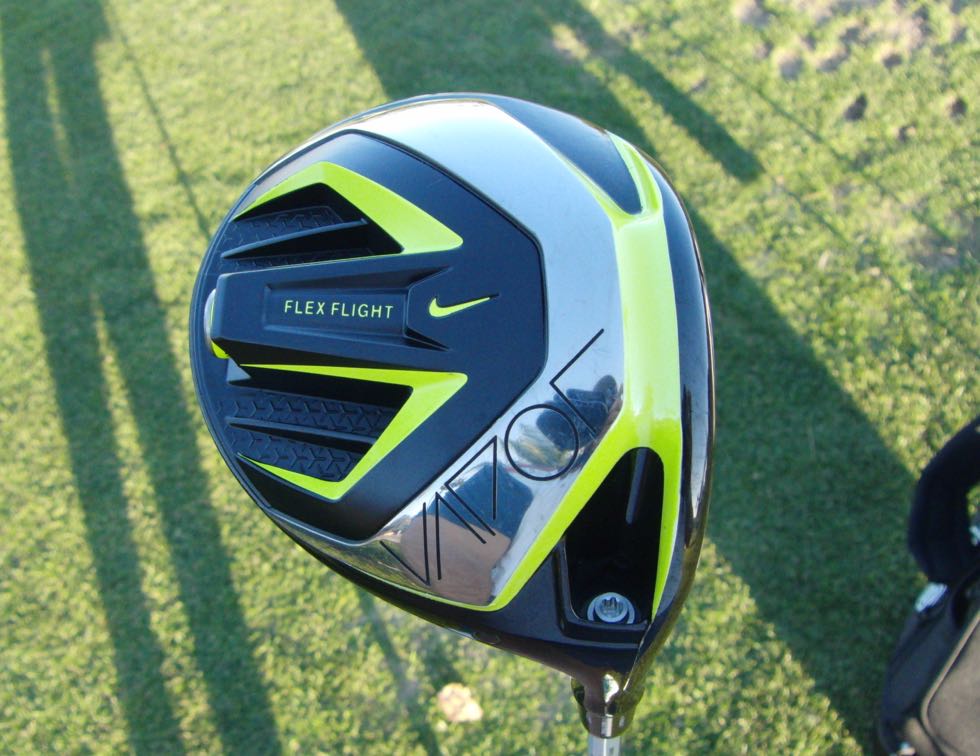 What do you want from a driver?
What do you want from a driver?
Distance? Check.
Adjustability? Check.
Great looks? Check.
The best sound and feel I’ve ever experienced? Check.
The Nike Vapor Flex driver reflects not what a driver should be, but what a driver can be. It’s an insane concoction of technology that builds on the innovations Nike has brought to market over the past half-decade, all packaged into one sleek clubhead.
Amazingly, when you actually take it for a spin, it all seems to make sense. It’s a better-player’s club that, despite the lime green and wild esthetics, produces a muted sound and a boring trajectory.
Let’s dive in.
Technology and Design
When Nike’s 2015 woods were first unveiled, you could pretty easily see the lineage from the previous Covert and Covert 2.0 woods. The Vapor line was offered in Tour, and non-Tour. Pretty clear.
Then they released the Vapor Flex, throwing a wrench all that symmetry.
The Vapor Flex represents Nike throwing everything they’ve developed over the last half-decade into one single club. It’s not so much a feat of engineering as it is a feat of product design. Someone green-lit the idea, the engineering, the color, the price point (MSRP $500). In a way, that’s pretty amazing.
As for specifics, let’s break down the previous designs that went into the Vapor Flex:
We start with the adjustable hosel, introduced way back in the 2009 SQ Dymo. It’s evolved past the Dymo days, and the name is now “FlexLoft 2” rather than “STR8-Fit,” but it’s still here and simple as ever.
Then there’s the Compression Channel, introduced in 2010’s original VR driver. It’s here, albeit tucked away and modified, to give your low strikes a bit of added oomph.
The Covert cavity back, first released in 2013, is here to stay in an attempt to maximize MOI. And this time it’s been mated with Nike’s new FlexFlight technology, a cross between TaylorMade’s MWT of the mid-aughts and Callaway’s Gravity Core, introduced a year ago.
Nike is also introducing what they call FlyBeam, a set of stabilizing bars meant to promote more a efficient strike.
What does all of this mean for your game? I’d say the most intriguing piece is FlexFlight. I had the TaylorMade r7 SuperQuad in my bag for about a half-decade, and I always liked the ability to move the weights forward and back if I happened to be hitting the ball higher or lower for a strentch. Coupling that with the hosel adjustability seems to be a pretty smart idea, and something TaylorMade never quite pulled off as simply as Nike has here.
Esthetics
The first thing you’ll notice about the Nike Vapor Flex is that the thing looks, as Richard Hammond of Top Gear (R.I.P.) would say, absolutely bonkers. It’s the golf club version of a Maclaren P1. It’s got a tight, angular design esthetic, with crazy colors and insane graphics. There are fins in the rear section of the sole just because why not put fins in the rear section of the sole? The word “Vapor” is etched in such a crazy font you can barely make out the letters.
The color scheme of lime green/yellow, black, and silver would be a physical affront to a Titleist fanboy. The angularity of the sole would make a Callaway designer weep. The crown graphics would seem downright crazy to a TaylorMade engineer. And yet, it makes total sense. When you pack this much design and engineering into a golf club, sometimes you just want it to look the part.
From every angle the Nike Vapor Flex driver just looks cool. From the sole, from the side, from face-on. People poured over the design of this club, and it shows.
At address, however, is where some people might come away a little disappointed. The logo of the Vapor line of irons and woods is a little triangle shape. It’s etched into the cavities of the irons, and they’ve embossed tiny triangles onto the crown. They fade in, from nonexistent on the side closest to the face, to noticeably raised on on the rear of the crown. They’re organized together in a (you guessed it) larger triangle shape that point from the rear of the club to the face.
You can look at this two ways – either it’s an alignment aid that fades away in bright sunlight and is a bit helpful, or it’s an annoying nuisance that doesn’t have much of a purpose. I tend to fall on the former side. It’s not the most effective alignment aid (particularly because there is no dedicated logo on the crown near the face), but I don’t hate it.
The Nike logo – in lime green, of course – also makes an appearance on the crown. I mentioned a few years ago when I reviewed the Covert and Covert Tour drivers that looking at that thing screams “hook!” at me at address, and I still get that feeling. I’ve gotten much more used to it, but I can’t shake that feeling completely.
Performance
The absolute first thing I noticed, and I suspect you will notice, is the sound of this driver. When I Nike VR_S Covert and Covert Tour Drivers Review I was struck by the respective sounds of the two models. The Covert Tour made a louder popping sound, while the regular Covert had a more muted thwack. That seemed backwards to me. I never really compared the Covert 2.0 drivers side-by-side, so I can’t tell you if that’s something they changed last year, but they’ve certainly corrected it in the Vapor Flex. Despite its flashy styling, this is probably the most muted driver I’ve ever hit, particularly on center strikes. It was less like I was hitting a golf ball with a tin can, and more like I was hitting one with a cast iron pan.
I like that a lot. With a loud driver, most of the “feel” we perceive is actually the audible sound of contact. That’s still true with a more muted wood, but when there’s less to hear, there’s less to feel with your hands. I got a very strong trampoline sensation from the Vapor Flex, like the ball was sticking to the face and then springing off, and I liked it a lot.
Three different people remarked to me about the sound of the driver, and all had complimentary things to say about it. It’s not just different, it’s an improvement.
If I could describe the Cobra Bio Cell+ Driver Review with one word it would be “launch,” since that driver really felt like it threw the ball way up into the air. With the Nike Vapor Flex, it’s “boom.” (I’m not great with adjectives.) The face just feels explosive, even when you don’t strike it pure. It doesn’t launch the ball up as high, but its boring trajectory is just as explosive.
In a strange bit of irony, the first time I took the Vapor Flex out to play a round I was paired up with a guy who was playing a Cobra driver from about a decade ago. One of those drivers they released during the height of the golf world’s fascination with carbon composite. One of those drivers that does sound like a tin can. Boy was that eye-opening (and ear-shattering).
I struggled a little bit last year with leaving the ball out to the right – for some reason the Bio Cell+ liked hitting high cuts. Not with the Vapor Flex. Due to some combination of the shape, the alignment aid, and the shaft, I found it very easy to swing from the inside with the Vapor Flex, producing high draws that, at worst, went straight. My miss changed from a flare out to the right to a combination of quick hooks and heel-hooks. The Vapor Flex is not for the faint of heart, nor the faint of center-strikes. This is assuredly a better-player’s driver. Hitting the ball in the center of the club face is absolutely imperative.
And, as you’d expect, it rewards you when you do strike the ball well. I found myself going for shots that I normally wouldn’t have because I knew if I hit the ball pure, I could eek out a few extra yards.
I’m not big into shaping shots with my driver – I try for consistency, so the most I really do is a sort of “no hooks” swing to take one side out of play – so the fact that I found it tough to fade the ball with the Vapor Flex didn’t really trouble me much. Adding a little extra draw to a shot wasn’t that hard, but working the ball left-to-right was consistently difficult. I found myself simply hitting hold-off straight shots when I was trying to get a little fade, whereas I still have no trouble getting the Bio Cell+ (and my older Nike Covert Tour) to cut. Like I said, this doesn’t really trouble me, but it might if you’re the type of person who likes to bend the ball.
Distance from the Vapor Flex was very good. You’re going to get pretty good distance out of just about any OEM driver these days, and you definitely won’t be disappointed by the Vapor Flex.
I should note that I found low strikes with the the Vapor Flex to go surprisingly far. I’m not going to tell you that was definitely due to the Compression Channel, but every time I hit the ball a little low on the face and still managed to have a pretty easy shot at the green, I was thankful to have it.
Specifications
The Nike Vapor Plus comes in just one loft – all of them. It is adjustable in half-degree increments between 9.5 and 12.5 degrees. I remember reading when Nike’s FlexLoft first came out that it isn’t quite as accurate as they profess it to be, but I did definitely detect a different between the lowest and highest loft settings. Is it perfectly accurate? Probably not, but that’s not a bad price to pay for the convenience and adjustability.
The review model I received came with a Diamana Blue shaft in stiff flex. It felt relatively true to that rating – maybe slightly on the more flexible side – and I really felt like I could load the shaft up when I wanted to get a little extra distance out of one. It’s not a flashy shaft in terms of looks or marketing, but it gets the job done. It’s available in regular, stiff, and extra stiff.
The Vapor Flex driver comes with a Tour Pride Tour Wrap 2G grip, which was awful. I switched it out immediately.
The headcover that the Nike Vapor Flex it comes with is nicely balanced between flashy, muted, and functional. It’s mostly black with green accents and a silver handgrab for easy removal.
The Vapor Flex retails for $500. That’s a steep price, no doubt, but it’s meant to compete against Callaway’s Big Bertha Alpha series. If you ask me, that’s a competition Nike wins.
Conclusion
I don’t like switching drivers. I had the TaylorMade r7 SuperQuad in my bag for a good five year, and if you asked me in January if I thought I’d be able to say the same thing five years from now about he Cobra BioCell+, I’d have said yes.
But I’m sticking with the Vapor Flex. This is the driver not for the player I am, but for the player I want to be (and maybe for the player I am on my best days). It’s an optimistic driver. I’m an optimistic golfer.
The Vapor Flex is probably the most “complete” driver I’ve ever owned. I’ve not had a single moment where the Vapor Flex left me wanting something. Except, maybe, Vapor clubs throughout my bag.
Nike Vapor Pro Combo and Vapor Speed Irons Mini-Review
As a throw-in, the nice people at Nike gave me 6-irons from both the Vapor Pro Combo and Vapor Speed lines for a mini-review.
The Pro Combos are an evolution of the clubs I reviewed back in 2011, theNike Vr Pro Combo Irons Review that I carry still in my bag. Now, they’ve been Vapor-ized.
In both of these cases, that means Nikes RZN technology in the cavities and a very subtle combination of muscleback and cavityback design. Both the Vapor Speed and Vapor Pro Combos are aggressively designed, with the shape of a better-player’s club in mind. The Vapor Speed is, of course, a little chunkier, while the Vapor Pro Combo attempts to walk the thin line between player’s cavityback and full-on muscleback.
Of the two models, the Vapor Pro Combo is much closer to my level of play, and I liked about 90% of what they had to offer. The Pro Combos are a very long club, consistently about 3-4 yards longer than my Vr Pro Combos (though the lofts are about one degree stronger through the bag). They’re forged from carbon steel, and when you couple that with the RZN filling in the cavity, you get a very soft iron.
My one gripe with the Vapor Pro Combos is that I don’t think they quite toe that line between muscleback and cavityback perfectly, in part because the Vapor Pro, Nike’s Tour-level line, is a little more forgiving than a typical muscleback. They’ve bumped the Vapor Pro Combos down a little, I suspect, in an effort to distinguish the two lines. Because of this, the soles and toplines of the Vapor Pro Combos are just a little thicker than I’d hoped, and there’s just a touch more offset than I’d like.
I haven’t hit irons like the Vapor Speed in a while, and they were a bit of a reminder why that’s the case. The soles and toplines are very wide, and I had trouble hitting them off anything but a propped-up lie in the short rough. They feel great though, and really bombed the ball. These are the type of irons that haven’t gotten made all that much since the introduction of the full set of hybrid irons, but I suspect people who like this sort of irons would really like the Vapor Speeds.

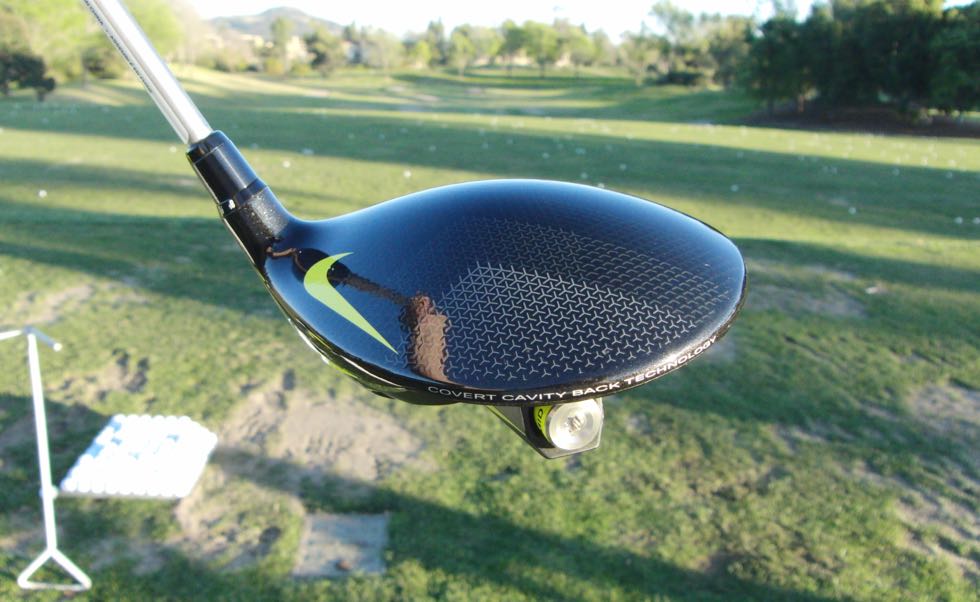
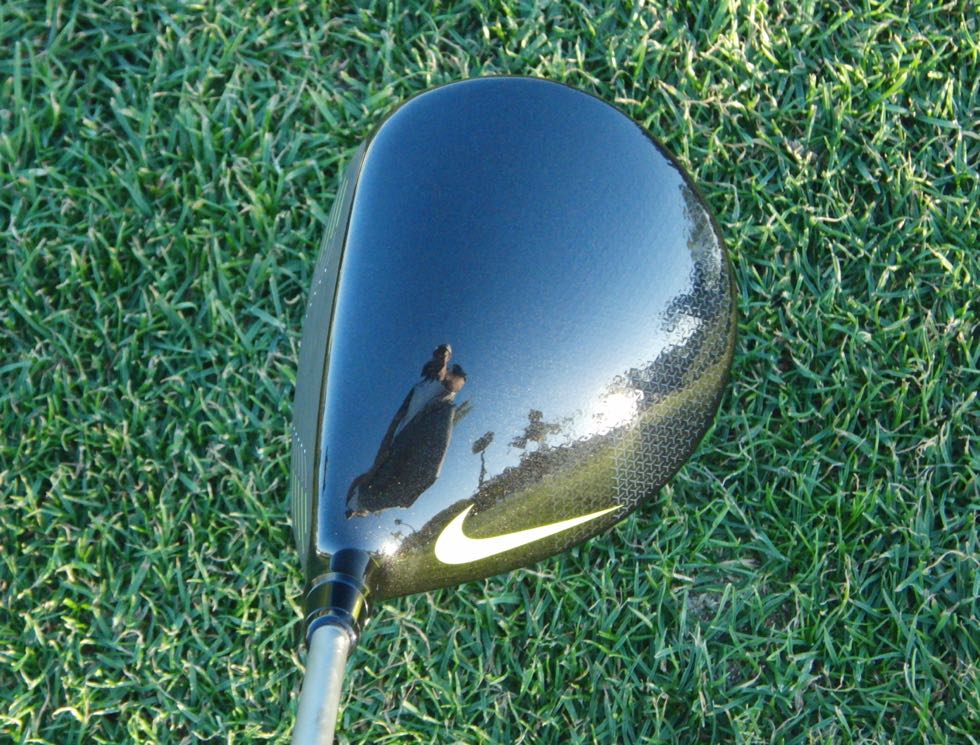
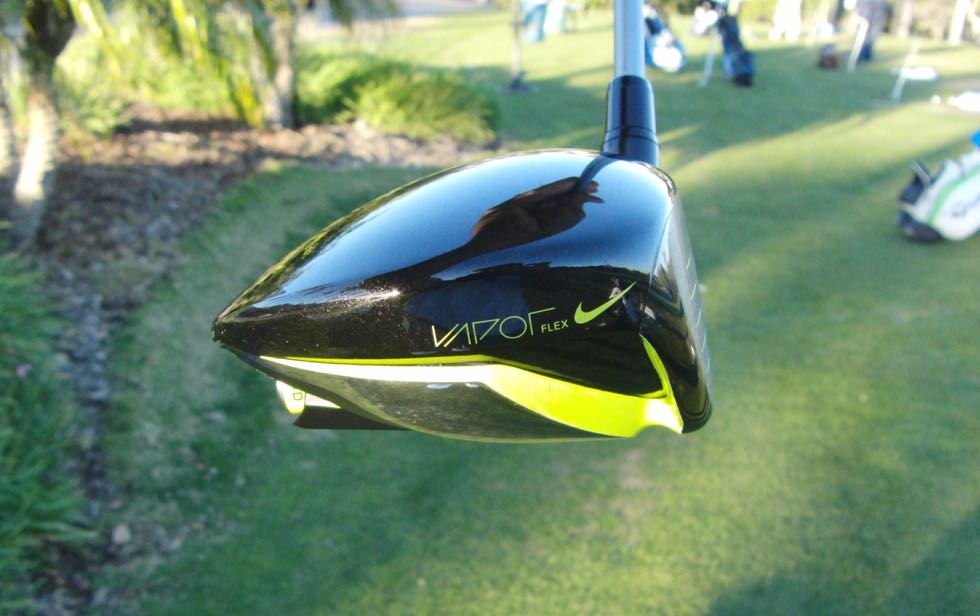
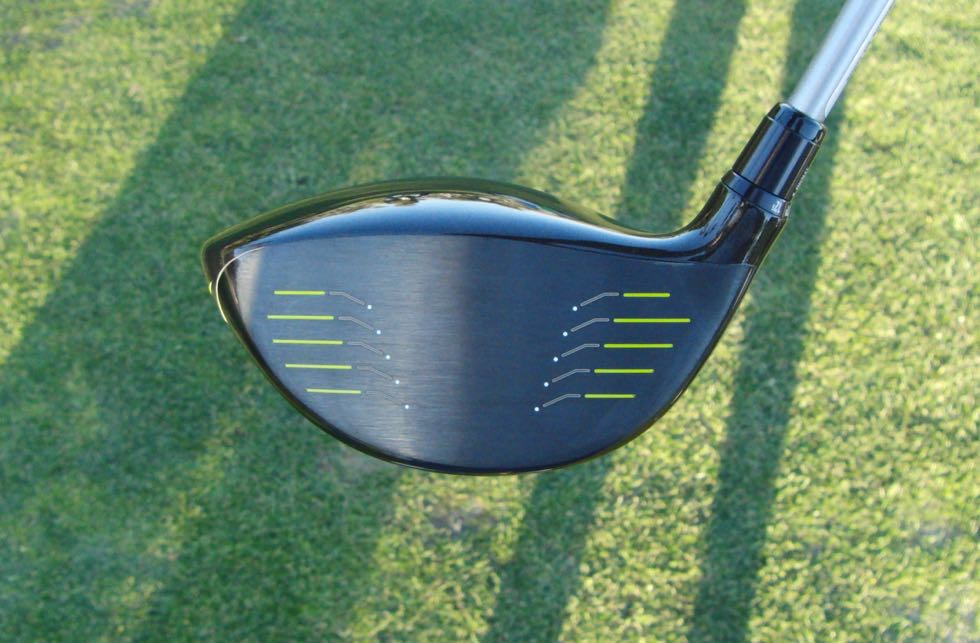
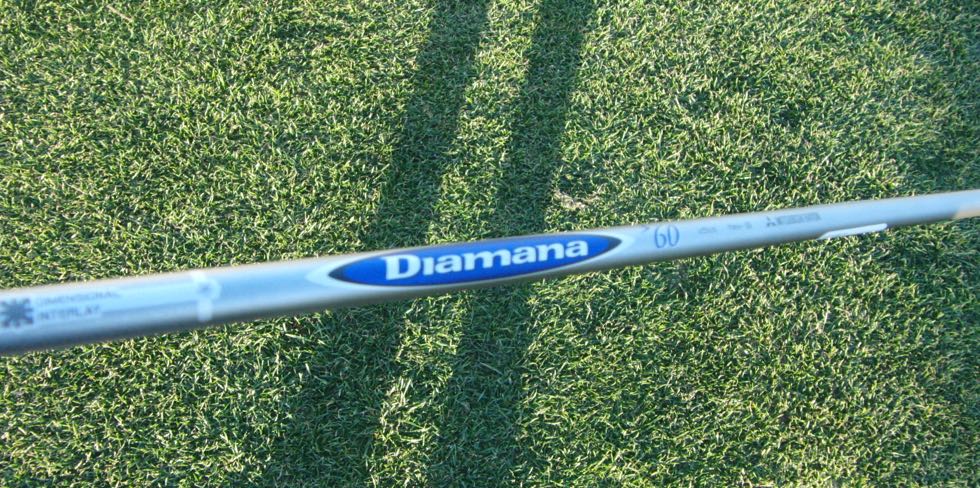
On Vapor Speed irons: I got custom-fit for a set from the Nike Tour Van during its summer trip. I have 4-AW, with C-Taper Light R-flex shafts (105 grams).
The soles of the irons have both left to right and front-to-back camber. So, a person with a shallow or moderate (me) angle of attack should be able to hit them fine off the deck. A person with a steeper angle of attack might have contact issues.
One potential problem: if you hit a shot thin, it takes off like a bullet. I was going uphill with a 4i – about 180 yards from the green – and hit it low and thin. It flew 5 feet off the ground and went OB 30 yards over the green. I’ve had two other “bullets” with different clubs that went forever long.
Note also that this year’s Nike iron crop does not have an SGI version. The Vapor Speed is a benevolent Game Improvement club, and the other two are in the Player’s realm.
I agree this club makes me hook the ball ore than any other.
I have this driver and it stays in my bag. As I explained to a golfing partner, she’s like a girl that’s probably bad news; that you know will get you into trouble, but you can’t help yourself because when you’re in harmony the sex is so good that everything else is secondary. When this driver is working, it’s just fantastic. Button it, and not only is the sensation like hitting a blade iron right in the spot, but the ball just bores. There’s no other word for it. On the other hand, mis-hit it and it’ll punish you so badly that your round could be a write-off. Think of riding an RG 500 2 stroke…it’s the same kind of thing.